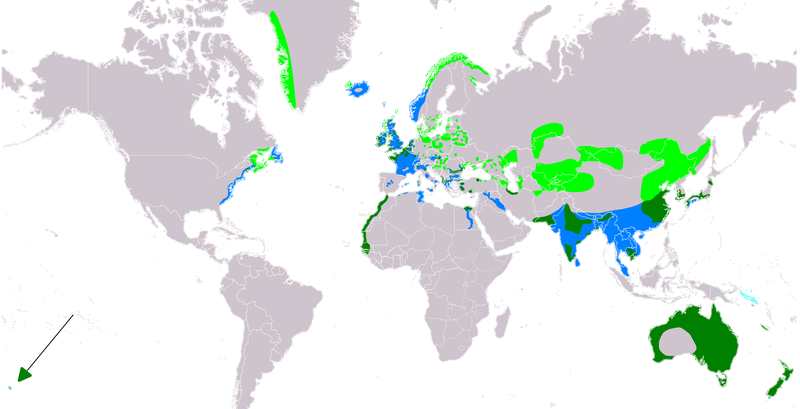CLICK ON PHOTO TO SEE HIGHER QUALITY IMAGE
Click external link here for detailed species information
Click external link here to see distribution map and to hear calls
The Black Redstart (Phoenicurus ochruros) is a small perching bird of the Old World flycatcher family Muscicapidae which is the genus Phoenicurus. It is a locally common resident in central and southern Europe as well as northern Africa. It also occurs in western and central Asia. In the warmer parts of its range it is sedentary. The northern populations migrate in the autumn to spend the winter in southern and western Europe, northern Africa and the Indian sub continent.
In
Ireland, it is a very uncommon spring and autumn passage migrant, in
addition very small numbers overwinter at traditional coastal locations.
Patrick J. O'Keeffe / Raw Birds
Patrick J. O'Keeffe / Raw Birds



















%20distribution%20map.jpg)






